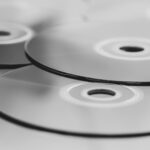The Quantum Dot OLED Display Technology
QD-OLED, or Quantum Dot OLED, is a Samsung display technology that promises to deliver the brightest and most accurate picture quality on today’s modern TVs. It takes advantage of two technologies to create the perfect combination.
Quantum Dots are tiny semiconductor nanocrystals. They can be tuned to emit specific colors when lit. This helps produce a wider color gamut. By turning a quantum dot to a certain wavelength, it’s possible to reproduce a full range of colors at peak brightness.
OLED TVs are known for their high contrast and deep blacks. However, they’re susceptible to overheating and burn-in at high brightness levels. A new type of QD-OLED panel should be able to improve these issues.
Quantum dots help produce more saturated colors and are a more stable source of light than conventional LCDs. They also enable more precise color reproduction. Their ability to produce more intense and brighter colors makes them a good choice for gaming monitors.
Advantages of Quantum Dot OLED Displays
Unlike current QLED displays, the next generation of Quantum dot OLEDs are thinner, produce better black levels, and are less prone to burn-in. They also offer the benefits of quantum dot technology, including the ability to produce light depending on its size.
- Quantum dots produce light depending on their size.
- They’re thinner than the current QLED.
- They’re less prone to burn-in issues.
- They deliver deep black levels.
Discuss the Potential Applications for Quantum Dot OLED Displays
Quantum dot OLED displays are becoming increasingly attractive, and they could eventually rival the performance of current OLED monitor displays. They are used to enhance the colors of LCD panels, but they also could be used in other applications as well. One of these applications may be digital lighting devices for cars.
Quantum Dots Are Used to Enhance Colors in LCD Panels
Quantum dots are a new technology used to improve the color performance of LCD panels. They are made from semiconductor nanocrystals that can convert energy to light with high efficiency. In fact, the size and composition of quantum dots determine the color of the light they emit.
Typically, quantum dots are manufactured in the form of a micron-sized crystal with a diameter of 2 to 10 nm. The spectral content of the smallest quantum dot is about 30 nanometers, which is narrower than the wavelength of a blue LED. This allows for control of the emission peak and wavelength.
As a result of their small size, quantum dots produce colors that are very accurate. Quantum dot displays are available in both emissive and non-emissive versions. When placed in a TV, they are typically paired with LED backlighting, which enhances the brightness of the screen.
While Quantum Dot technology is a useful tool to enhance the color quality of an LCD display, it does not have the mass market appeal of its more popular counterpart, the OLED. The company is working with 3M to bring quantum dot color enhancement to mass-market displays.
They Can Be Used as Phosphors in Applications
Quantum dots are semiconductor nanocrystals with diameters of 2-10 nm. They have wide absorption bands, high quantum efficiency, and good spectral overlap. QDs are typically used as color-converting materials. These applications include hybrid LEDs, phosphorescent dyes, and quantum dot OLED displays.
Optically pumped quantum dots are an innovative class of phosphors. In the past few years, researchers have made use of this technique to fabricate a variety of LEDs.
Besides their ability to enhance the output performance of LEDs, QDs also have the potential to be incorporated into a wide range of technologies. As a result, these devices are finding applications in a variety of industries. For example, a hybrid LED uses QDs to boost the light output of blue or UV LEDs. The combination of the two allows the display to emit a wider range of colors.
A number of techniques for manufacturing PQDs are possible, and these methods are fast and convenient. However, their efficiency decreases when the material is self-aggregated. Moreover, there is a need to stabilize the material before applying it to display applications. Therefore, manufacturers focus on optimizing the size of subpixels.
They Could Challenge the Current LED Technology as Digital Lighting Devices for Automotive Systems
The development of QD-based display technology has been a hot topic in recent years. It offers many exciting advantages. For example, PQD-based white light LEDs show high efficiency and ultra-high luminous intensity. These materials are expected to play a critical role in future generation displays. They also have low fabrication costs and are mask-free.
Perovskite-based QD-LEDs are characterized by high polarization characteristics. They also exhibit a wide color gamut and high efficiency. Compared with traditional LEDs, the emission spectra of QD-based LEDs are nearly constant. In addition, the absorption spectrum of QDs must match the emission spectrum of the active LED. This feature is advantageous for a variety of display technologies.
Several approaches have been investigated for mass assembly. One approach involves using a photoresist mold to prevent the coffee-ring effect. Another technique uses a quasi-horizontal separation structure, which is believed to increase the QD light extraction efficiency.
Mass transfer is one of the most important fabrication processes for large-scale displays. The transfer process is fast, low-cost, and requires no phosphor to perform. However, the low transfer yield limits full-color uLEDs.
They Could Rival OLED Displays’ Performances
Quantum Dot OLED (QD-OLED) is a new flat panel technology that uses quantum dots to produce a brighter and better display. It can be used on TVs and computer monitors.
Quantum dots are tiny semiconductor particles that can be used to boost color saturation in LCD and LED TVs. Quantum dot technology also eliminates the need for a white subpixel. This reduces the cost of components and makes the display more energy-efficient.
While the technology is still in its early stages, it can be used to improve the performance of current OLED displays. The benefits include more efficient color, greater contrast ratio, lighter weight, and better HDR performance.
QD-OLED is being developed by Samsung. According to reports, it is expected to be commercially viable in the next five years. A 65-inch QD-OLED display, manufactured by Samsung, was recently recognized as the world’s first self-emitting, true RGB Quantum Dot OLED display.
Despite being a new technology, Quantum Dot OLED has already been incorporated into TVs from Sony and Samsung. In addition, it is expected to be used in car displays.
Also Read: Gaming Setup Essentials For A Smooth Gaming Experience
Conclusion
Alienware’s 34 Curved QD-OLED Gaming Display is the first gaming monitor to feature quantum dot technology. Quantum dot monitors offer greater contrast and brightness, as well as deeper blacks. They have less burn-in risk than other OLED technologies, making them great for gaming.
















